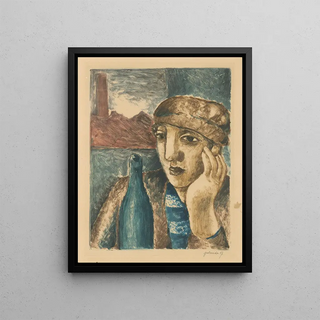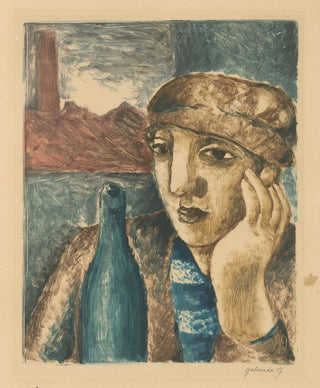Art print | Ivre - Mikuláš Galanda


View from behind

Frame (optional)
Ivre - Mikuláš Galanda – Captivating introduction
In the fascinating world of art, some works transcend their era to become witnesses to a unique sensitivity. "Art print - Mikuláš Galanda" fits into this tradition, captivating the viewer with its emotional intensity and psychological depth. This piece, at the crossroads between figurative and abstract, invites an exploration of the twists and turns of the human soul. It evokes a sensory experience where intoxication, both physical and spiritual, manifests through vibrant colors and bold shapes, thus revealing the inner struggles and joys inherent to the human condition.
Style and uniqueness of the work
The style of "Art print" is distinguished by a rich and daring color palette, where shades blend with a disturbing harmony. Galanda, as a master of composition, plays with contrasts to create an atmosphere that is both enchanting and unsettling. The shapes, often organic and fluid, seem to dance across the canvas, suggesting a perpetual movement that draws the eye and stimulates the imagination. This piece does not merely depict a scene; it invites the viewer to feel, to live the experience of intoxication in all its forms. Blurred contours and dynamic textures testify to an ongoing search for expression, where each brushstroke becomes a cry from the heart, a declaration of intent. The singularity of this creation lies in its ability to evoke complex emotions, oscillating between jubilation and melancholy, while leaving room for personal interpretation.
The artist and his influence
Mikuláš Galanda, an emblematic figure of Slovak art of the 20th century, managed to establish himself through his innovative approach and his singular artistic vision. Influenced by expressionist and surrealist movements, Galanda explored universal themes such as love, suffering, and the quest for self. His mastery of colors and shapes, combined with a keen sensitivity to human emotion, allowed him to create works that still resonate today. As an engaged artist, he was also a witness to the upheavals

Matte finish

View from behind

Frame (optional)
Ivre - Mikuláš Galanda – Captivating introduction
In the fascinating world of art, some works transcend their era to become witnesses to a unique sensitivity. "Art print - Mikuláš Galanda" fits into this tradition, captivating the viewer with its emotional intensity and psychological depth. This piece, at the crossroads between figurative and abstract, invites an exploration of the twists and turns of the human soul. It evokes a sensory experience where intoxication, both physical and spiritual, manifests through vibrant colors and bold shapes, thus revealing the inner struggles and joys inherent to the human condition.
Style and uniqueness of the work
The style of "Art print" is distinguished by a rich and daring color palette, where shades blend with a disturbing harmony. Galanda, as a master of composition, plays with contrasts to create an atmosphere that is both enchanting and unsettling. The shapes, often organic and fluid, seem to dance across the canvas, suggesting a perpetual movement that draws the eye and stimulates the imagination. This piece does not merely depict a scene; it invites the viewer to feel, to live the experience of intoxication in all its forms. Blurred contours and dynamic textures testify to an ongoing search for expression, where each brushstroke becomes a cry from the heart, a declaration of intent. The singularity of this creation lies in its ability to evoke complex emotions, oscillating between jubilation and melancholy, while leaving room for personal interpretation.
The artist and his influence
Mikuláš Galanda, an emblematic figure of Slovak art of the 20th century, managed to establish himself through his innovative approach and his singular artistic vision. Influenced by expressionist and surrealist movements, Galanda explored universal themes such as love, suffering, and the quest for self. His mastery of colors and shapes, combined with a keen sensitivity to human emotion, allowed him to create works that still resonate today. As an engaged artist, he was also a witness to the upheavals






